How Neptune’s Triton Destroyed Nearly All Of Its Moons
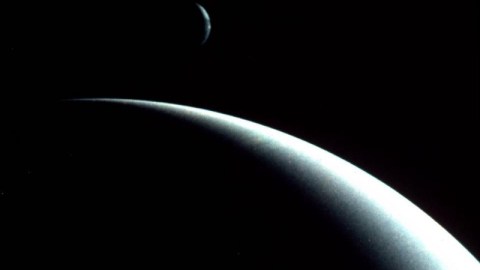
The largest moon around our last planet didn’t originate with Neptune.
When it comes to the moons of our Solar System, there’s only one planet that doesn’t fit in with our expectations: Neptune. For every other planet, there are two main ways that they acquired their moons:
- either moons arose as the result of a giant impact, kicking up debris that either fell back onto the main world or coalesced into one or more satellites,
- or their moons are left over from the formation of the Solar System, forming from a circumplanetary disk around a gas giant world.
Earth and Mars likely got their moons from giant impacts, along with large Kuiper belt objects with moonslike Pluto, Haumea, Eris, and Makemake. In fact, it’s speculated that giant impacts are the number one way that terrestrial, rocky worlds get their moons.
But for the gas giant worlds, their moons mostly formed from a circumplanetary disk early on, complete with large moons that all orbit in the same plane and a ring system to go along with them. Jupiter, Saturn, and Uranus all fit this picture, but Neptune is an outlier. It’s one large moon, Triton, appears to be a captured Kuiper belt object, and obliterated almost the entire Neptunian system in the process. Here’s what we know today.
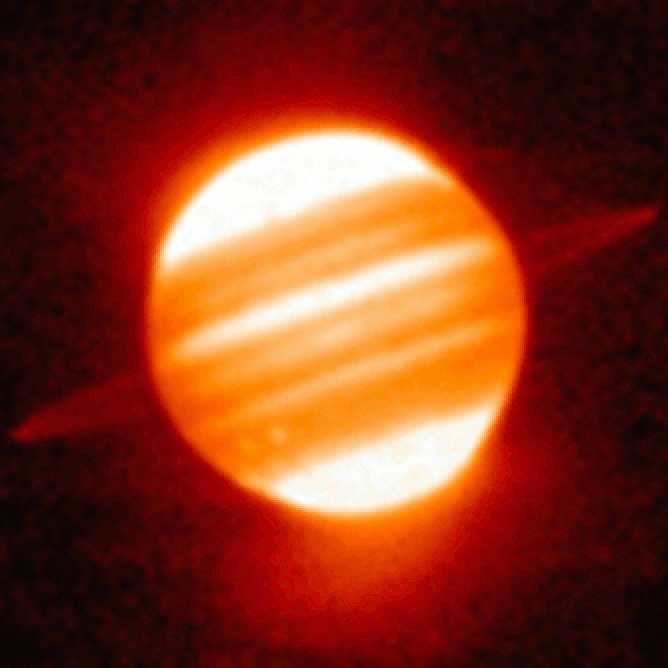
If you take a look at the three “typical” gas giant planets, they all tell a similar story. Jupiter has four large moons: the Galilean satellites of Io, Europa, Ganymede, and Callisto. Interior to Io, there are four small moons; outside of Callisto, about four times as far away, a whole slew of small, outer moons orbit around Jupiter. The major moons all orbit in roughly the same plane, which coincides with the orbital plane of Jupiter itself.
Saturn only has one enormous moon, Titan, but possesses a total of 7 moons that are at least 10% as massive as Earth’s moon: Mimas, Enceladus, Tethys, Dione, Rhea, Titan, and Iapetus. Outside of that last large moon, Iapetus, there are no additional moons until you get a little more than three times as far away, and then there are lots of small moons that orbit around Saturn. The moons that are interior to Iapetus — and there are 23 of them — all orbit in the same plane as one another, which is the same plane as Saturn’s rotation and its impressive ring system.
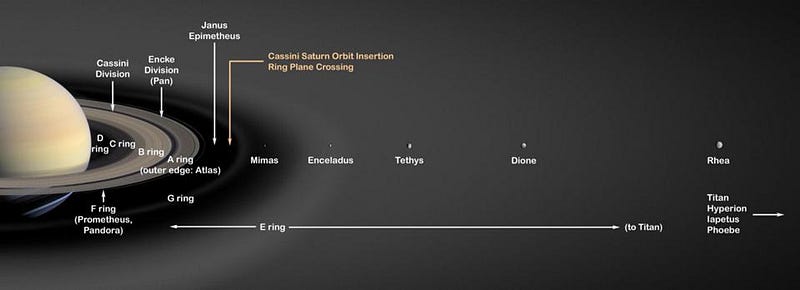
The next planet out, Uranus, has five major, massive moons: Miranda, Ariel, Umbriel, Titania, and Oberon. Interior to Oberon, there are a total of 17 Uranian moons, and only Miranda, whose orbit is tilted by 4.2° with respect to Uranus’s rotation, is tilted by more than 1°. Beyond Oberon, there are nine known small moons thus far, with the closest one about seven times as distant from Uranus as Oberon is.
But then, we come to Neptune. Neptune’s satellites are dominated by one massive moon: Triton, which currently ranks as the seventh largest moon in the Solar System (behind the four Galilean moons of Jupiter, Saturn’s Titan, and Earth’s Moon). Interior to Neptune, the rest of its satellites look normal: there are seven of them, and while the innermost Naiad is inclined at 4.7° with respect to Neptune’s rotation, the other six are tilted by less than 1°.
But when you look at Triton and beyond, it doesn’t look like any of the other known lunar systems.
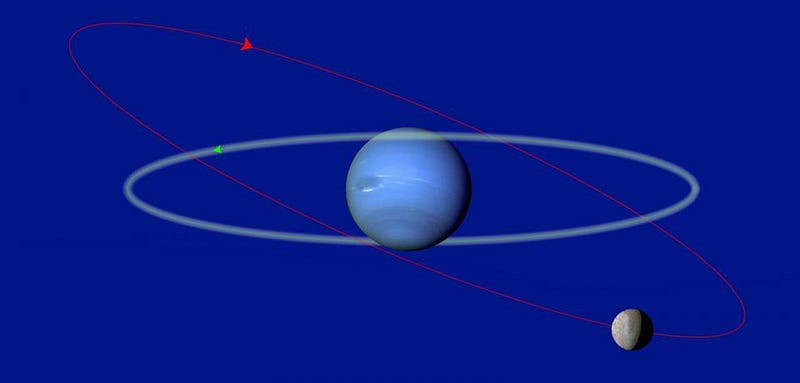
For starters, Triton’s orbit is all wrong. Every other large moon that we know of — Earth’s Moon, as well as all of the major, massive moons of Jupiter, Saturn, and Uranus — all orbit in roughly the same plane as the planet they orbit. Moreover, they all orbit in the same direction that the planets do: counterclockwise, if you’re looking “down” from the north pole of the Sun.
But not Triton.
Triton orbits in what we call the retrograde direction: it orbits clockwise around Neptune, even as Neptune and all the other planets (as well as all of the moons interior to Triton) revolve in the opposite (prograde) direction. Additionally, Triton isn’t even in the same plane — or close to it — that Neptune orbits. It’s tilted at about 23° with respect to the plane that Neptune rotates on its axis, in addition to revolving in the wrong direction. That’s a big, red flag that tells us Triton did not form from the same circumplanetary disk that the interior moons (or the moons of the other gas giants) formed from.

Another interesting property of Triton is its density. The other massive moons of the Solar System exhibit a wide range of densities, but mostly fall in a range between 2.0 and 3.0 grams per cubic centimeter: comparable to the density of Earth’s crustal layer. On the high end are the innermost large moons of Jupiter: Io and Europa; on the low end are Titan, Ganymede and Callisto. As you go farther and farther away, to the satellites of Uranus, they drop in density, down to about 1.5 grams per cubic centimeter. The other satellites of Neptune and Uranus are mostly water-ice, with a density indicating that.
But then there’s Triton.
With a density of about 2.06 grams per cubic centimeter, Triton’s density is anomalously large. It’s covered in various ices: frozen nitrogen atop a carbon dioxide (dry ice) and water-ice mantle, similar to the composition of Pluto. However, it must have a denser, rock-and-metal core, which gives it a significantly higher density than Pluto. The only object we know of that’s comparable to Triton? Eris, the most massive Kuiper belt object: 27% more massive than Pluto but somehow still smaller.
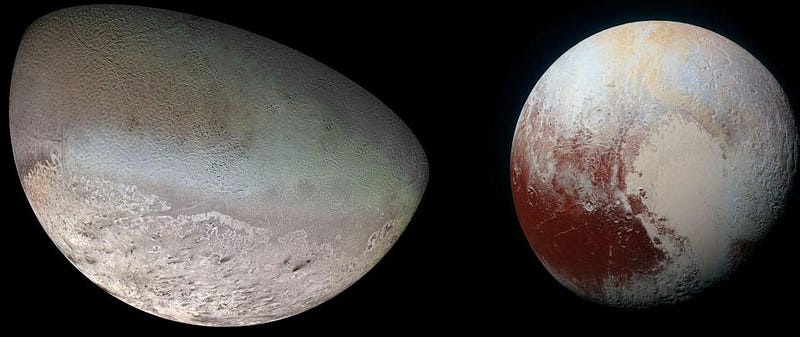
Finally, Triton is an extreme outlier when you look at the outer moons of Neptune. Admittedly, it’s possible, just as it’s also possible for Uranus, that there are an enormous suites of smaller moons that are orbiting this outer gas giant, and that the lack of a dedicated mission over the past 30 years has prevented us from detecting them. But when we look at the other satellites that exist beyond the last major satellite of a gas giant planet, they all begin appearing somewhere from 3-to-8 times farther away than the last major moon.
But not in the case of Triton and Neptune.
Triton is relatively close in to Neptune, with a mean orbital distance of just 355,000 km: about 10% closer to Neptune than the Moon is to Earth. But the next moon out, Nereid, is a whopping 5.5 million km away, for a 15.5-to-1 distance ratio. Even worse, if you go to the next moon out from Nereid, you’ll come to Halimede, which is 16.6 million km away, a spectacularly large distance. All told, there are only 14 known moons of Neptune, the smallest number known for a gas giant planet.
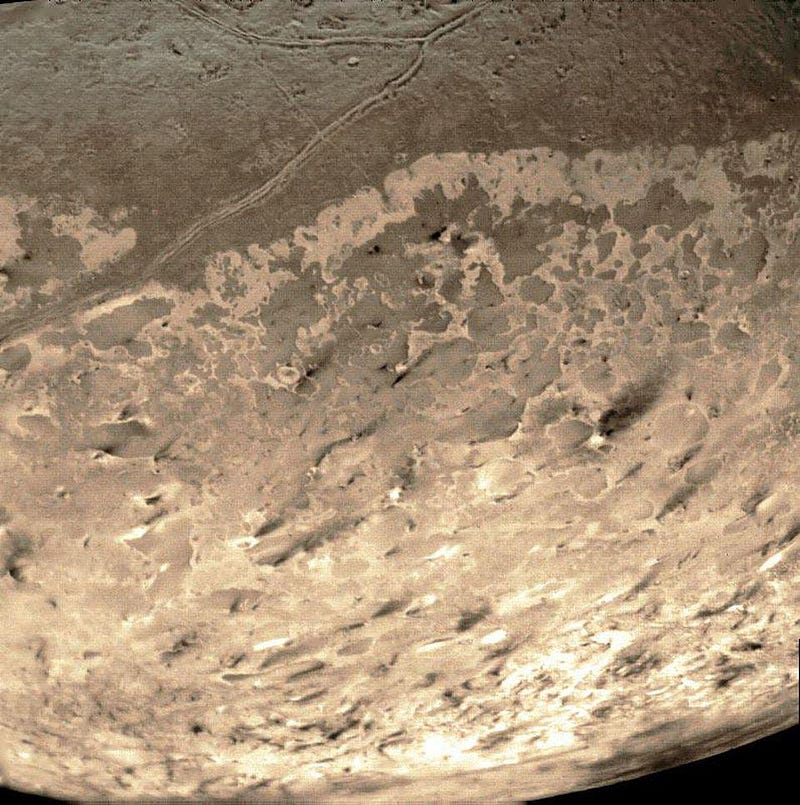
Moreover, there are additional “weird” properties about Triton that make in unlike any other moon. In terms of its surface, it has icy cryovolcanoes, making it one of four worlds in the Solar System (Earth, Venus, Io, and Triton) known to have active volcanic activity on the surface.
In terms of mass, if you add up all the satellites of Neptune, Triton composes 99.5% of the mass of everything orbiting Neptune: moons, moonlets, and rings all included. This is by far the largest ratio of any planetary system with more than one moon involved.
And in terms of color, it doesn’t look like any of the other moons of Neptune, Uranus, Saturn or Jupiter. Instead, it fits right in with objects like Pluto and Eris: the large Kuiper belt objects. In fact, if we examine both the atmosphere and the surface of Triton, it has far more in common with the known Kuiper belt objects than any of the other moons in our Solar System.
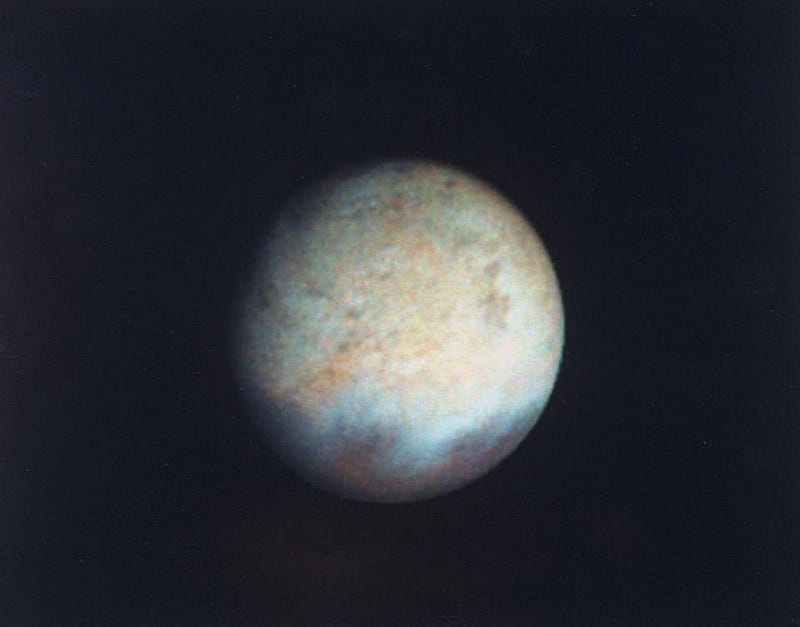
All of this evidence points to one fascinating conclusion: Triton didn’t form like the other large moons of the gas giants did; it didn’t arise from a circumplanetary disk dating back to the early stages of the Solar System. Instead, it appears as though Triton was originally a Kuiper belt object — larger and more massive than either Pluto or Eris — the one-time King of the Kuiper belt. Only, some time ago, Triton was gravitationally captured by Neptune, where it continues orbiting that massive world even today.
If this is true, it means that Neptune very likely did have a rich lunar system of its own, with a series of massive, large moons orbiting it at one point. And then, over the course of hundreds of millions (or maybe even billions) of years, slight, repeated tugs on objects in the Kuiper belt brought the largest object in it within its Hill sphere: the region of its gravitational influence. That was the start of a process that would lead to Triton’s capture.
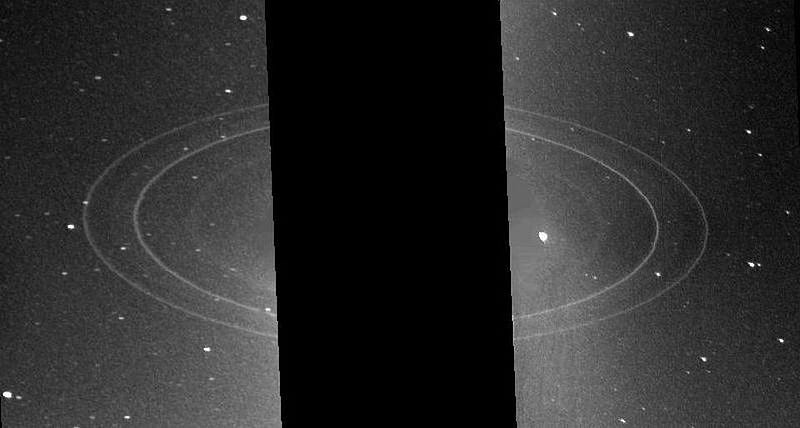
The innermost seven (small) moons of Neptune, from Naiad through Proteus, are likely the only Neptunian moons left over from Neptune’s formation and that original circumplanetary disk. These moons are all small, low in mass, all orbit in the same plane as Neptune’s rotation, and complete a revolution around Neptune in under 27 hours. They’re incredibly close in to this gas giant world.
Beyond that, there was likely a rich lunar system that we’ll never know about. That’s because Triton, a captured Kuiper belt object, cleared out everything else. Through a combination of gravitational interactions, angular momentum transfer, and tidal forces from Neptune, Triton eventually:
- migrated inwards,
- ejected all of the pre-existing outer moons of Neptune,
- and was brought into a tidally locked, circular orbit around Neptune.
Triton, more than any other factor, makes Neptune’s lunar system unique among the worlds of our Solar System, but the implications are fascinating.
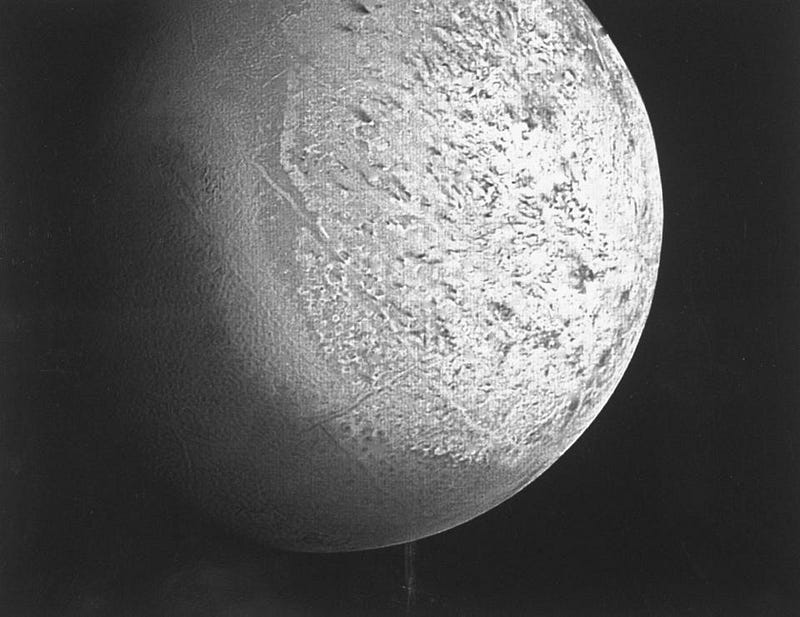
When we put everything we’ve learned together, we’re left with a picture where Solar Systems form with a series of planets around them: a mix of terrestrial (rocky) and gas giant (with hydrogen/helium envelopes) planets. Outside of the last planet that forms — the farthest large-mass world that can clear its orbit — a series of icy bodies ought to persist in an analogue of our Kuiper belt. And it may be a very likely event, perhaps even an inevitability, that one of the most massive objects will become gravitationally captured, clearing out most of whatever pre-existing satellite system existed around that world.
Neptune is the only planet in our Solar System to have its original lunar system disrupted in this way. Triton, the one-time “King of the Kuiper belt,” was gravitationally captured by it long ago, eliminating all but the innermost satellites of Neptune in the process. Do some of them still exist as centaurs or long-period comets? Are any of Neptune’s outer moons remnants of its original circumplanetary disk? Are there additional moons waiting to be discovered? And is its lunar system typical of an outermost planet in exoplanetary systems?
These are all open questions, with planetary astronomers awaiting additional data and novel missions to know for sure. In the meantime, we can be confident that Triton destroyed Neptune’s pre-existing satellite system. In the chaotic gravitational dance of our Solar System, only the survivors remain to tell their tales.
Ethan Siegel is the author of Beyond the Galaxy and Treknology. You can pre-order his third book, currently in development: the Encyclopaedia Cosmologica.





